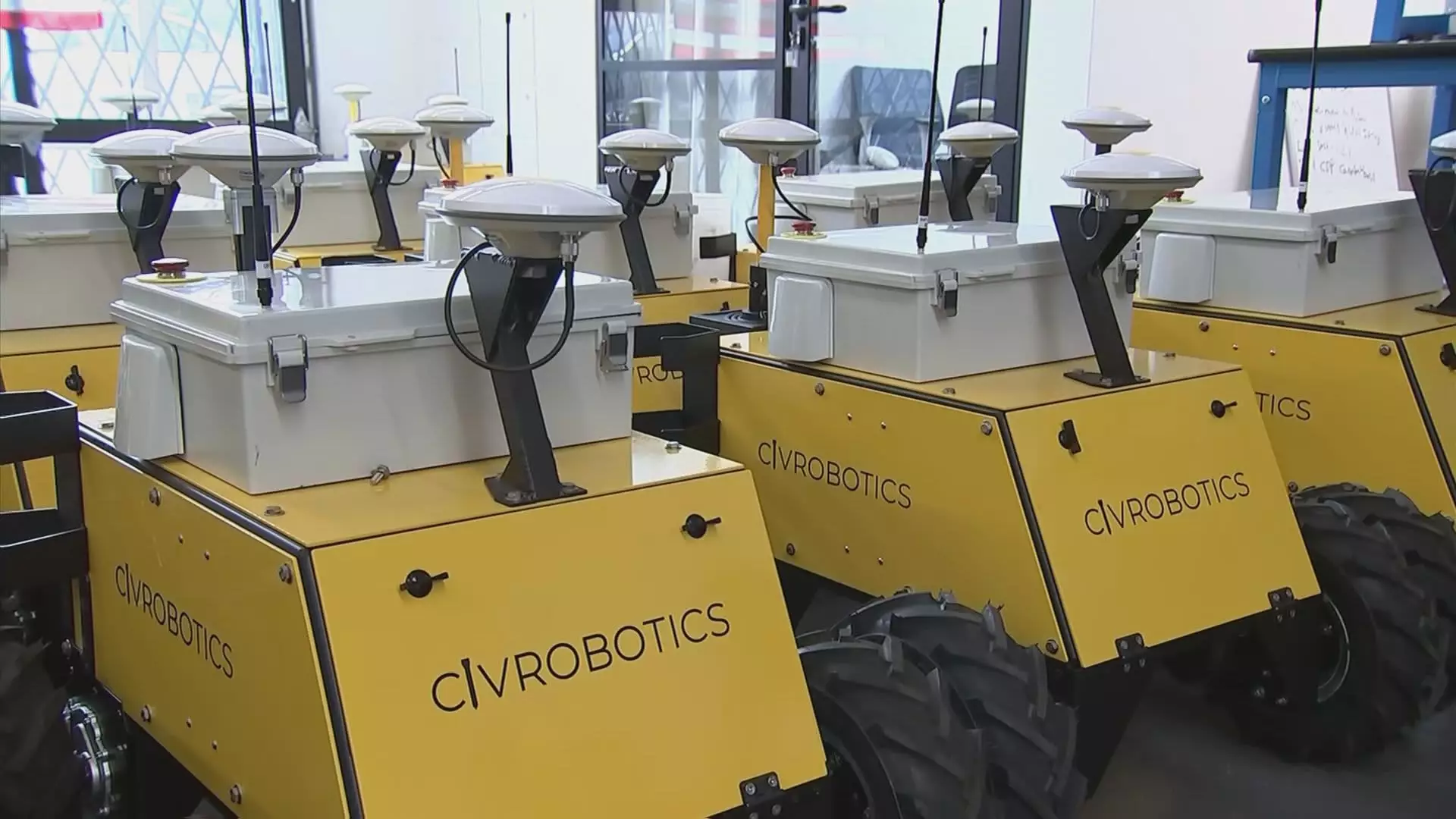In the realm of renewable energy infrastructure, efficiency and cost reduction are the Holy Grail. While government policies have often played a pivotal role in facilitating green projects, recent shifts towards austerity and reduced subsidies have amplified the importance of technological innovation. The emergence of specialized robotics, exemplified by CivDot from Civ Robotics, signals a paradigm shift that could redefine how large-scale solar farms are built. These autonomous machines are not mere gimmicks; they represent a strategic leap forward in tackling one of the sector’s most persistent challenges: meticulous, time-consuming surveying under diverse and rugged terrains.
Instead of relying solely on traditional manual labor and labor-intensive surveying methods, firms now harness the power of autonomous robots capable of marking thousands of points with precision within minutes. CivDot’s ability to operate in harsh environments—riding over uneven ground and withstanding tough weather—addresses long-standing logistical obstacles. This technological advance is not just a matter of convenience but a critical strategic asset that can accelerate deployment timelines, reduce costs, and improve project scalability, particularly at a time when public funding for renewables is waning. Such shifts are a testament to how private innovation is filling the gaps left by government retreat.
Critical Assessment of the Technology’s Impact and Limitations
While the promise of robotic surveyors like CivDot is impressive, a more critical perspective reveals both its strengths and inherent limitations. On the one hand, the speed and accuracy of these devices are transforming the landscape of renewable project planning. Libby Brown of Bechtel reports that their familiarity with automated marking has resulted in quadrupling productivity—from 350 to over 1250 points per day—in challenging terrains. This implies that projects can be executed more rapidly and with fewer human personnel, cutting costs that matter significantly when margins are already tight.
However, a skeptical view raises questions about the long-term reliability of such technology. Terrain variability, battery life, and maintenance costs could offset some of the efficiency gains. Although CivDot’s batteries might be swapped easily, logistical considerations around power supply and the durability of the machinery in extreme weather conditions could pose hurdles. More concerning is the risk of over-relying on automation without adequate human oversight, which might lead to oversight errors or unforeseen technical failures delaying projects.
Furthermore, the competitive landscape remains somewhat limited. Civ Robotics faces relatively niche rivals focused more on highways or sports fields rather than tough outdoor environments where renewable projects flourish. This indicates a potential lack of market maturity, or perhaps underdeveloped competition, which could constrain the evolution of robotic surveying solutions in this industry. If larger players or traditional survey firms push back, innovation might plateau, and the promised efficiencies may never fully materialize across all terrains and project types.
The Broader Implications for the Future of Clean Energy Development
In the wider context of the energy transition, automation’s role in project development is a double-edged sword. On one side, it facilitates faster deployment of renewable infrastructure—an absolute necessity given the urgency of climate change. Large-scale solar and wind projects require meticulous planning, often delayed by logistical bottlenecks. Integrating robotics could lift these barriers, allowing private companies to accelerate their timelines and reduce costs, which is essential when government incentives decline.
On the other hand, this technological leap raises concerns about job displacement in specialized roles like surveyors and field engineers. The reliance on robots may foster a dependency that stifles the growth of skilled labor, which is counterproductive if the goal is a resilient, adaptable energy sector. Moreover, the focus on automation may entrench a profit-driven mindset that prioritizes short-term gains over comprehensive, environmentally sensitive planning.
Nevertheless, for center-right liberal-minded advocates, these innovations embody the pragmatic combination of free-market ingenuity and technological advancement that drives economic growth while advancing renewable energy. While skepticism about big tech dependence and robotics is valid, dismissing these tools outright risks missing the opportunity to harness their potential responsibly. Achieving an efficient and sustainable energy future requires embracing technological solutions that can operate confidently in challenging conditions, reduce costs, and stimulate private investment in a time of diminishing government support.

